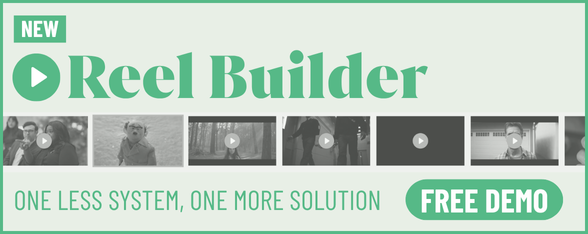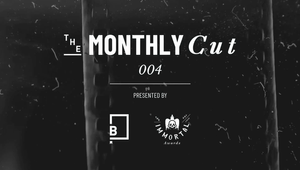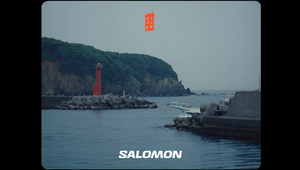
Red Flags and Reiki: Agency Leaders Discuss the Perfect Pitch at Cannes 2024

Pitches giveth and they very much taketh away. A black hole that sucks in people, time, money and all matter surrounding it and a fountain, spraying forth opportunity and growth. On day one of Cannes, at the LBB & Friends Beach, EMEA editor Alex Reeves sat down with experts across the industry to get the lowdown on the state of modern pitching.
At heart, pitches are ultimately about relationships and for Xavier Rees, CEO at AMV BBDO, the best pitches are those that try to replicate, as far as possible, the actual working environment and relationship you may end up with.
“I think so often pitches are called because the relationships are broken, but then the pitch process doesn’t examine the very reason it was called in the first place,” he says, thinking back to a pitch for Carling where the client went to great lengths to create a fruitful environment in which to build that relationship.
“The Carling pitch was actually a beautiful thing because the clients gave a huge amount of their time to make sure that they were available to us to use how we wanted to and that enabled us to get to know them, feel sake in taking early thoughts to them, roll through different conversations, build trust, work out who they got on with and who they didn’t and it just felt like we were working together and therefore when they decided who to work with, they were choosing a partner not a beauty contest winner.”
If the pitch can feel like a simulation of a working relationship and not a gruelling assault course, it benefits agency and client alike, adds Jen Costello, the global CSO at TBWA\Worldwide. Reflecting on recent pitches for Levi’s and Carnival Cruises, she explains, “We had a couple of pitches in the last six months that were just a good time. I think when pitches feel good to everybody, they are the kind that show your agency at its best, they give people a chance to shine. They aren’t easy but there’s an ease to them. No one’s ever white-knuckled their way to powerful creativity.”
To an extent building, nurturing and maintaining relationships – which includes pitching – requires a particular sensitivity to interpersonal dynamics and that most intangible of things: energy. So much so that John McCarthy, CMO at Johannes Leonardo jokes that his job is an agency Reiki practitioner, “trying to help channel and formulate that energy amongst the team that’s working on it, but importantly, building the relationship over time.”
One frustrating truth is that sometimes clients that you’ve had for a while will invite their agencies to repitch. Sometimes motivations can be dubious – to shop around or to try to push the current agency to reduce costs but at times the relationship really is in need of a reset. Jen says that when it comes to repitches she watches out for ‘red flag parades’ but on balance accepts they’re a fact of life, especially with government brands that are obliged to reassess partners regularly or with clients for whom a mandated repitch is built into the contract.
“I think hope springs eternal and we always hope that by really bleeding for them creatively or strategically, maybe they won’t call that pitch that was in the contract five years ago. But it always seems to happen. I think when we are very confident that our teams have been paying attention and listening, really observing the signs and signals, and they have observed the relationship clearly, and a repitch is a surprise - that’s where I’m concerned. That’s when I’m a bit like, ‘what’s not being said here? Where did the relationship fall apart?... Because I actually think that repitches never work when the incumbent is invited as a courtesy, if a client has already decided it ain’t you, it’s somebody else. That’s when I think that we shouldn’t be participating in a repitch.”
Bastien Baumann, chief design officer at Le Truc compares the client-agency journey to ‘a love relationship’. “You get into a marriage and then, you know how it goes. So, there’s the honeymoon phase and then you go into a transition phase, and then if you’re not careful then it ends up maybe in the wrong place. I think where brands are struggling to stay relevant and on the forefront of what’s happening, I think it’s at that time, if you’re not careful about that balance, it’s the right time to call for a pitch or couples therapy.”
Pitches are notorious for sucking up agency resources and, at worst, burning people out. But it’s a tough commercial environment out there so it can be tempting to jump on every opportunity going. But one thing that the panellists agree on is that sometimes, you have to say ‘no’.
“I think more agencies should harness the power of saying no, and I think clients respect you for it as well,” says Xavi. “In my experience, if you’ve got a good reason for saying no, then it doesn’t make clients not want to work with you.”
From John’s perspective, the wrong pitch and the wrong win can create problems that escalate for agencies down the line.
“If you’re not mindful of exactly the right kind of opportunities, if you’re just coming from a totally safe revenue assessment, it can turn out to be really disruptive to your business over the long run,” says John. “But I’ve found in the course of my career that not all revenue is created equal. There’s the really good stuff that creates a virtuous cycle and there’s the stuff that sucks you down a hole. Oftentimes that decision is made in the very beginning stages of the pitch, whether or not we’re going to pursue that opportunity.”
The decision to say ‘no’ or ‘yes’ to a pitch or opportunity ought to be a team decision. According to Jen, the right ‘alchemy’ of personalities in the leadership team can make saying no a powerful choice – and can create space to have challenging conversations about being open to ‘maybe it’s a yes’.
“This is the strategist in me, but the juicier the problem, the harder it is to push that water uphill, the more I want it. But this is my toxic trait, and I’m actually really grateful I have people around me,” she says, with a dash of self-deprecating humour. Xavi agrees, suggesting that it’s why it’s so crucial to have CMOs and chief growth officers in the leadership team.
Of course, there’s also opportunity to be had outside of the traditional pitching format or by playing fast and loose with the normal order of things – as long as the ‘energy’ is right.
John recalls the early days of Johannes Leonardo, when he and the team were hustling hard, putting out speculative pitches. These days though, the ideal is when clients come directly to the agency based on the work they’ve seen.
“In the early stages of Johannes Leonardo, we were a startup creative agency, we didn’t really know any better, so we were just knocking on doors, starting early stage conversations, pitching random ideas,” he says. “We had nothing to lose, so we were willing to take those risks and those led to some incredibly fruitful long term relationships over time.
“I think now, as we’re a bit more mature as we look at the opportunities –the ones that come to us based on work – and we can try to convert it as much as possible, those are always the best. We’re trying to mine those as much as we can as it makes tons of commercial sense to avoid a pitch. It also makes the agency team feel really proud that their prior work is what brought this in the door and we didn’t have to necessarily put all the energy and resources required for the full blown pitch.”
Xavi recalls one particular client where the team ended up pitching on multiple brands. They’d won one brand and when the second brand went up for pitch, the energy in the room at the tissue meeting was so electric that they decided to call the client straight away. They’d worked out how much it would cost to finish the pitch and suggested to the client that they should just close the pitch down and get to work as a team.
“They bloody said yes!” says Xavi. “I think there’s a bit of ‘follow the energy’ and believe in yourself. But also, I think it’s fine to make unfair requests of clients because you never know when they will say yes.”
Bastien agrees on the importance of that interpersonal connection, especially when it’s two big corporations meeting. That’s why he believes in small pitch teams. “We all know big corporations and how it works. I think usually keeping the team small and then getting really excited about the problem is usually very [important].”
Ultimately, pitches can be incredibly demanding and horror stories about burnout are everywhere across the industry. So how do leaders protect their people? For Xavi, it’s all about being honest and transparent with yourself and your team, and trying to factor in people’s personal situations ahead of time,
“I think the biggest lie agencies tell themselves is that pitches aren’t going to be hard,” he says. “The number of times I’ve had conversations where ‘we’re going to do this one differently’ and actually, the truth of it is everybody tries and wants that, but pitches are hard, hard, hard. I think sometimes what we get wrong is fooling ourselves into thinking they won’t be. I think it’s much better off starting off going, ‘there’ll be different points in this process where it’s going to be really difficult. How do we create an environment that protects people even though it’s going to be hard?’ I don’t think the answer is ‘it’s not going to be hard’. It’s: don’t take you people for granted.”
For Bastien, though, the new generation of ad folk have stricter boundaries about protecting their personal time and he’s noticed that they’ve found new ways to approach the pitch. Where his teams struggle is the lack of wider industry recognition for the work that goes into winning business. “I feel like there are ways to win new business without destroying your soul,” he says. “What’s hard is that most creatives I talk to say, ‘I can’t put that stuff in my portfolio because it’s pitch work’, and then it’s not valued as much… I think there is a weird thing in advertising where winning new business is a thing you don’t put in your portfolio, but then the work that gets produced is what ends up in the book.”
As much as the pitch is a perennial cause for complaint among agencies and the hunt for a new approach is something of an industry white whale, it seems that even in the burgeoning age of AI, we still need some way of bringing the two sides together to test out that energy and chemistry. Even as the discussion comes round to the structure of pitches and the prevalence of intermediaries and pitch consultants, the same theme keeps coming up - it’s nuanced, it’s all about energy. Some consultants are better than others. It all comes down to that interpersonal dynamic.
“I think,” says Bastien, summing things up, “that it’s still a human experience.”















